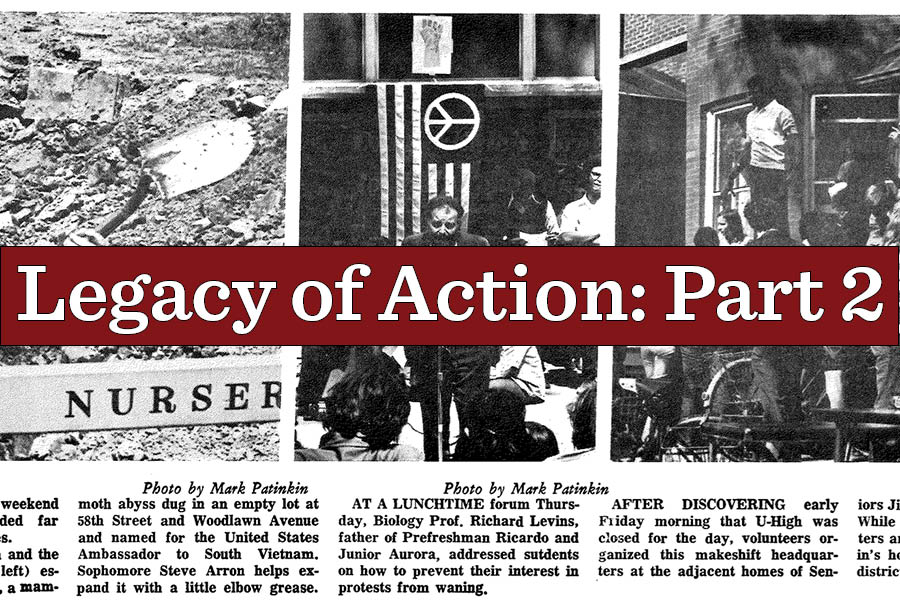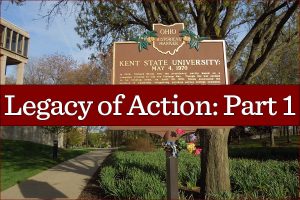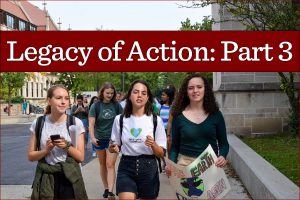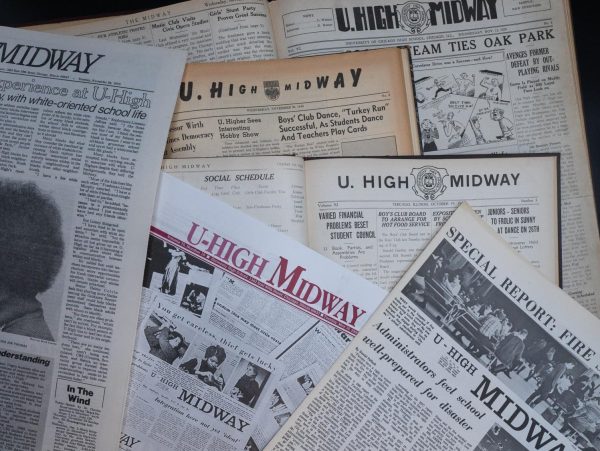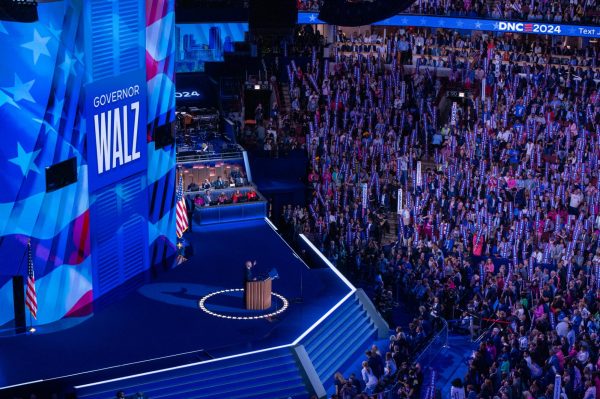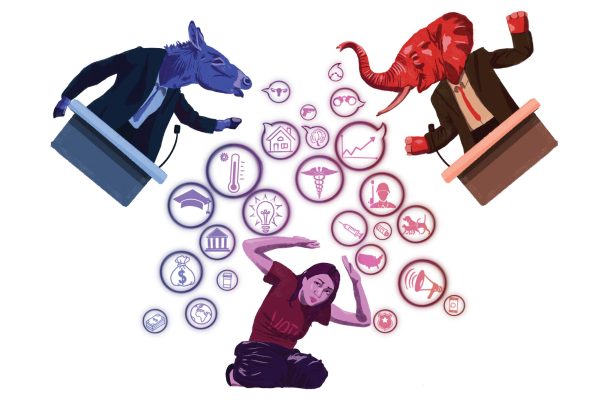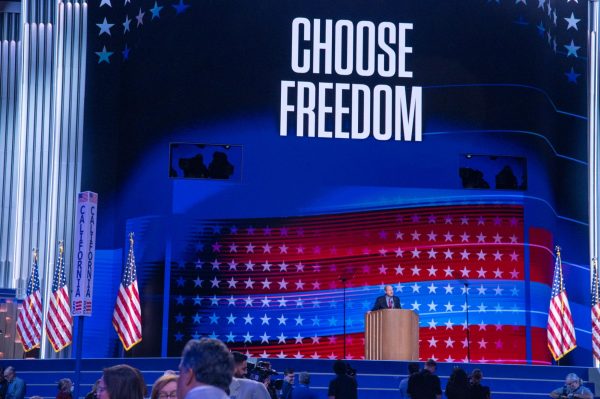Legacy of action: The protests at Lab
“You can kill the revolutionaries: but you can’t kill the revolution!! Remember KENT!” reads a poster pictured in the May 12, 1970, U-High Midway newspaper. This attitude toward protest proved itself to be prevalent among faculty and students at Lab throughout the late 1960s and early 1970s with many members of the Lab community demonstrating their opposition to the Vietnam War.
The shooting at Kent State University in Ohio on May 4, 1970, was one of many events that left the Lab community shocked, but it also acted as a catalyst, causing students to stand up for ideas that they believed in despite consequences and school closure.
Hart Billings, a 1979 graduate who was in third grade at Lab at the time, remembered coming home from school, hearing the news about the Vietnam War on his family’s black-and-white television every night as his mom made dinner.
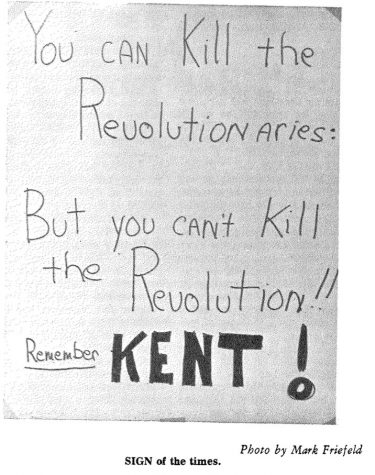
A photo of a poster put up in response to the shooting, taken by the Midway in 1970.
“We’d walk in and, it’s really no different than COVID I guess, they talked about the daily body count and how many people had been killed that day. So it was, the war was ever-present, and in fact, in much of my young life, there was constant war,” Mr. Billings said.
Opinions and anxiety about the war were in the school environment as well.
“Those were painful, wild years, and that was certainly as true at Lab as it was at other places,” said English teacher Darlene McCampbell, who was at the beginning of her career at the time. She said that two years prior to the shooting, one of her students, a demonstrator, was injured during the 1968 Democratic Convention in Chicago.
“The fact that again a Lab student — it may have been more, but one that was in my class — the fact that she was hurt, brought it home,” she said.
Ms. McCampbell recalled that the events that unfolded in 1968 through the early 1970s initiated a reaction of shock from the Lab community, causing students to become very involved in war protest programs, discussions, open forums, canvassing antiwar petitions, rallying and other forms of activism..
“Kids were demonstrating, teachers were as hippie-wild as the students, not 100% but pretty close,” Ms. McCampbell said. “The Vietnam War was tearing everything apart in a way that isn’t similar to now. People were angry and active in a way that I’m not sure I think is quite so now.”
Inspired to discuss and promote change, four middle school students even risked suspension to attend a high school forum regarding possible war protest programs.
Due to a teacher’s meeting after the Kent State shooting and major rallies in protest in-the-making, the Laboratory Schools also published an anti-war statement. Along with this statement, faculty like Richard Levins, a biology professor, also encouraged students to continue protest efforts in open forums.
On Friday, May 8, 1970, the Laboratory Schools closed due to “the dangerous nature of the present domestic and international situation,” according to school director Francis V. Lloyd Jr. After the school closure cancelled many in-school protest programs, students banded together by gathering at students’ houses to organize their new plan for protests.
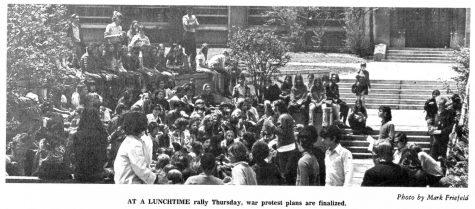
Students at U-High gathered in protest in response to the shooting.
According to reports in the Midway newspaper from May 12, 1970, students divided into 36 groups of three to four, spread across Hyde Park, 125 of them canvassed with petitions and letters that they sent to senators and President Richard Nixon, resulting in 8,000 signed petitions, 2,400 letters and $400 contributed to postal fees.
Peter Marks, a student at Lab at the time, said that many students also protested by digging up part of a park, naming it “Ellsworth Bunker” after an official in the Nixon administration, in the middle of campus.
“There was nothing like that protest,” Mr. Marks said. “I mean to actually dig up a huge field, you know, and make a bunker out of it, everybody’s walking around… I’d say that’s the most protest I’ve ever seen, or the most sustained protest I’ve ever seen.”
Lab students continued measures of protest throughout the war, and at the time, Mr. Billings felt a shift in people’s willingness to take a stand.
“It forever changed the way people reacted to events because they knew that they could have a voice. In the 1970s, especially with this upheaval, obviously people’s behaviors were very different and people took it upon themselves to say what they felt,” Mr. Billings said. “People were much freer to express themselves, I think.”
























































